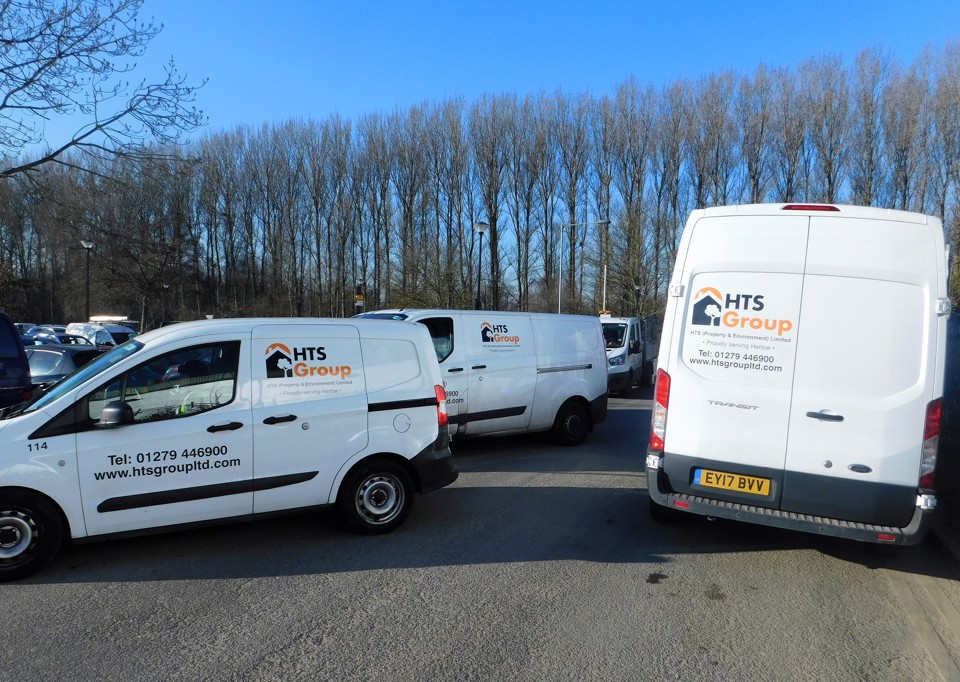HTS (Property and Environment), which provides housing repairs, maintenance, facilities management and environmental services in Harlow, Essex, was a finalist in this year’s Fleet News Awards’ safe fleet category and has also received the Fleet Safety Trophy from RoSPA.
Here we look at the steps it takes to run a safe fleet:
Step 1: driver recruitment
All new employees at HTS (Property and Environment) who will drive on company business undergo a two-and-a-half-hour induction before being given the keys to their vehicle.
“When a driver walks through the door, we know nothing about them, we recognise that,” says Tina Roach, HTS assistant transport manager.
“Before we allow them to get into a company vehicle, we want to do more than just check their licence. So, we have an introductory programme for all drivers.”
This focuses on four areas: theory, a practical driving assessment, an eye test and a driving licence check.
The theory section includes watching a DVD on safe loading as well as presentations on daily vehicle checks, accident procedures, the Highway Code and the organisation’s telematics policy.
“We’ve got a duty of care to keep drivers and the public safe, so we put together a driver safety scheme to make sure we reached everybody,” says Roach.
Step 2: Safe driving policy
HTS (Property and Environment) sends a copy of its vehicle and road safety policy plus driver handbook to new employees along with their contracts.
“Our policy highlights the driving behaviours and speed control,” says Tina Roach, HTS assistant transport manager.
“We work in a lot of housing estates and around schools as well. So, even though the speed limit may be 30mph, the policy highlights some of the areas where they should reduce their speed to 20mph.”
The safety policy also highlights that if they notice anything wrong with their vehicle, they report it immediately.
“We run our own workshops so
we promote a culture of reporting absolutely everything,” says Roach.
“This also allows us to undertake trend analysis and recognise where improvements can be made, or where further training may be needed.”
As well as providing the safety policy to drivers, HTS communicates its contents and a safe driving message through toolbox talks, posters and text messages.
“We reach drivers through their mobiles and PDAs. We know it will reach every employee as they will look at their phone,” says Roach.
Step 3: Improving performance
Monitoring driver behaviour through a telematics system has helped HTS (Property and Environment) reduce the number of recorded vehicle incidents by more than 50% in the past 18 months.
“A lot of our fleet and driver safety procedures and policies are based on risk and our tracker system gives us the control measures to monitor this,” says Tina Roach, assistant transport manager at HTS.
“We have a suite of reports that our tracker system allows us to access. The major one is safety analytical data and that includes speeding, journey start time, locations, harsh braking and idling.”
This information is used to compile driver scores, rating performance out of 100%. HTS sets employees a target of 97% and often achieves above 99%.
Each employee has access to their own scorecard and is encouraged to improve their driving through a driver of the month competition.
“We knew from research that if drivers have a goal, they are likely to want to improve their habits, and then we would become more environmentally-friendly as well as safer,” says Roach.
“They get a monetary voucher which is a substantial amount to maybe take their partner out for a meal.
“On top of that we will publish the results in our quarterly staff magazine and a monthly notification goes out to all staff to say X has won driver on the month, and it is usually really well received.”
HTS also uses the telematics data to improve driver behaviour where necessary. “If we do spot something that could be improved, approaching that driver in a friendly manner, showing them the system, and highlighting what they’ve done, we notice a huge improvement,” says Roach.
“For instance, we had one driver who was speeding down a certain part of a road continually for a week.
“We brought him in and showed him and it was really affecting his scores – he’d gone from 99% to 92%. After showing him what he’d done he turned himself around and achieved 100%, and then won our driver of the month, which was fantastic.”
Roach says the fact HTS has its own vehicle workshop is also a major contributor to operating a safer fleet.
“We carry out random gate checks on our vehicles and we will pull our drivers in and make sure they are filling in their daily defect book and doing their daily checks,” she adds.
“Because we do that, I believe everything is reported to us. We are proactive and we will fix things immediately. Drivers do not have to wait at a garage for four hours, they have no downtime and the vehicles are kept in as best condition as they can be.
“We’ve got a 100% MOT pass rate because we also carry out preventative maintenance and have safety checks between annual services, and we believe that really contributes to a safer fleet.”




















Login to comment
Comments
No comments have been made yet.